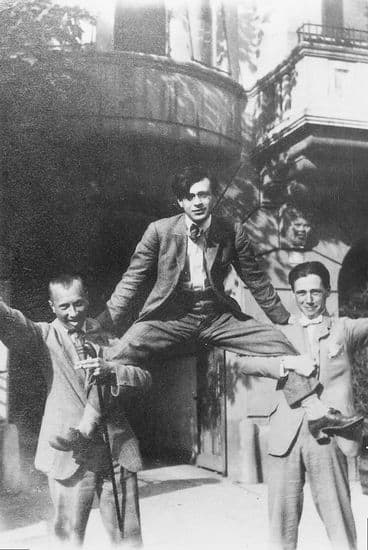Group of scoundrels seize biofuel for their own amusement
Article published in O Século, 6th June 1920, Lisbon
Witnesses claim to have seen, at the heart of the northern capital, impertinent young people, their hair combed back or crowned by pointed hats, muttering bizarre, insolent, repetitive, noisy, and meaningless words, which they dare to call poetry, while brazenly consuming the precious biofuel of our enemies.
For the last two years, the so-called ‘Monarchy of the North’ has based its military superiority on the possession of a considerable quantity of Port wine, which Paiva Couceiro and his colleagues use to drive their vehicles and other shoddy machinery.
However, a group of young rebels, unknown to the authorities, managed to get their hands on a reserve of seventy-five thousand tonnes of Port wine, stored in oak barrels in the basement of the Royal Palace, to use it in the most surprising way. Wearing black panther costumes, sometimes buried in cubist outfits, they drink, burp, laugh, and have fun; for weeks they have been seen getting shamefully drunk all night.
Some made very unfunny jokes, others imitated the king in a degrading manner; they puked in the middle of the marble staircase of the Holy House, danced with their teeth chattering, wore demented masks, proclaimed absurd vowels, like drunks, and called themselves ‘dada’, one of his many stupid words. They behaved like beasts and savages, degrading the public roads and spitting on their monarchy: quite simply, like drunks.
It’s enough to make one reevaluate the so-called ‘Northern Monarchy’. Are the impressive reserves of Port wine, accumulated by this so-called regime, really intended to advance their war economy, or are they meant to distract some young delinquents who are looking for meaning in their lives? Is the laudable biofuel project just a good excuse to get idle young people to drink? It’s a clear discrediting of the Northern regime and its sacrosanct resources.
[This article presents fake information, using an implicit reference to the Dadaists in the description of the ‘group of young people’].
 «Les artistes dadaïstes Jean Arp, Tristan Tzara et Hans Richter» (https://www.larousse.fr/encyclopedie/images/Jean_Arp_Tristan_Tzara_et_Hans_Richter/1311013)
«Les artistes dadaïstes Jean Arp, Tristan Tzara et Hans Richter» (https://www.larousse.fr/encyclopedie/images/Jean_Arp_Tristan_Tzara_et_Hans_Richter/1311013)
Comments